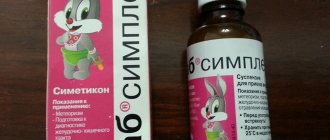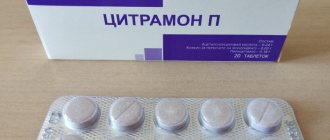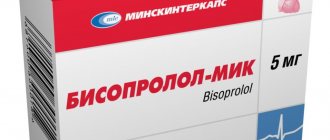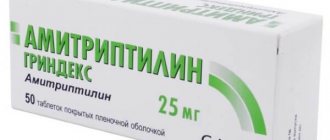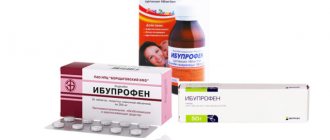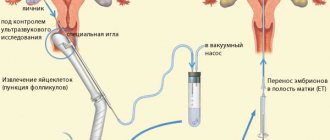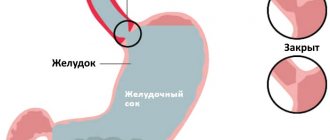Estradiol for IVF: norms in the table and features
Stable hormonal levels indicate a woman’s good health. By the amount of estradiol E2 in the body, you can determine whether the embryo transfer procedure was successful, as well as whether the pregnancy is proceeding well. Low estradiol during IVF signals possible problems with the attachment of the embryo after transfer. In addition, this may be a sign of a threat of miscarriage, so it is important to know what estradiol levels are considered normal during IVF.
About estradiol and estrogen
The female ovaries produce several types of hormones. Estradiol is an estrogen responsible for the development of sexual characteristics in the fair half of humanity. More precisely, this hormone is only part of estrogen, since in addition to it, the ovaries contain estrone and estriol. In addition to estrogens, hormones such as progesterone and androgens are formed in the female reproductive glands.
Estradiol affects the work:
After the embryo implantation procedure, estradiol and progesterone are responsible for the normal course of pregnancy.
Since a distinctive feature of the IVF protocol is the artificial stimulation of superovulation using hormonal drugs, it is necessary to control the amount of hormones in the patient’s body. For this, the woman is prescribed a blood test.
Proginova - instructions for use, analogues, reviews, price
Proginova
is a hormonal preparation containing estrogens identical to the natural ones normally produced by a woman’s ovaries. The drug replenishes the deficiency of estrogen when there is insufficient production, for example, during menopause or after removal of both ovaries (surgical castration). Accordingly, Proginova eliminates the manifestations of menopausal and castration syndromes caused precisely by estrogen deficiency, since it replenishes the deficiency of this hormone.
Proginova is able to eliminate the following estrogen deficiency symptoms - hot flashes, sweating, sensations of heat or cold, chills, sleep disturbances, depression, irritability, nervousness, headaches, dizziness, atrophy of the skin and mucous membranes. In addition, the drug effectively prevents osteoporosis in women with estrogen deficiency.
Release form, composition, varieties and names of Proginova
Currently, Proginova is available in a single dosage form - tablets
for oral administration. Proginov contains estradiol as an active component in a dosage of 2 mg per tablet. All tablets in the Proginov package are exactly the same and, accordingly, contain the same dosage of estradiol. The drug is available in packages of 21 tablets. Since Proginova contains only one hormone, the drug is often called monoestrogen.
In addition to Proginova, there is another drug on the pharmaceutical market - Cyclo-Proginova, but it is fundamentally different from the first, and only their names are similar. Thus, Cyclo-Proginova contains two hormones - estradiol and progesterone, and is a two-component, combined estrogen-gestagen drug. Even though both Proginova and Cyclo-Proginova are used for the same conditions, doctors and scientists prefer them
Source
Estradiol norm during IVF
All women are recommended to be tested for hormone levels before embryo transfer. This will help identify a problem such as ovarian hyperstimulation in advance. A blood test is also done to track changes in estradiol levels at different stages of pregnancy.
The normal hormone level after embryo transfer is considered to be from 154 to 3000 Pg/ml .
With IVF, the level of estradiol is determined on the day of transfer and another week after. This is done in order to determine the activity of the corpus luteum. If abnormalities are identified, hormonal support can be prescribed or changed.
After embryo transfer, hormonal support can be changed if estradiol levels deviate from the norm.
Estradiol is produced not only by the ovaries, but also by the adrenal glands. After embryo transfer, estradiol is responsible for the thickness of the endometrium. The hormone helps create favorable conditions for the strong attachment and maturation of a fertilized egg.
After transfer, estradiol is necessary for:
- Normal activity of the uterine mucosa.
- Proper formation of the child's bones.
- Strengthening the metabolic process.
- Growth of uterine tissue.
- Increased blood flow.
Almost all hormones in a woman’s body are in a bound state. About 2-10% are in a free state. It is free estradiol in active form, together with another hormone - progesterone, that creates good conditions for the formation of the embryo and its growth. The level of these hormones increases after embryo transfer, creating a favorable environment for the unborn baby and stimulating the growth of the uterus.
Estradiol and progesterone regulate the blood pressure of the expectant mother.
How to cancel support after unsuccessful IVF
After embryo transfer, the woman is prescribed hormonal medications. After about 1.5-2 weeks, blood is taken to determine the level of human chorionic gonadotropin. If pregnancy has occurred, then by this time the hormone level will be high.
When the test result is negative, hormonal support is discontinued. If the doctor has any doubts, the test is repeated after a few days. With late implantation, the hCG level begins to rise later, but doubles every 1.5 days.
Hormonal drugs are canceled only when there is complete confidence in the absence of pregnancy. In this case, there is no point in continuing to support the cycle with medications.
Sometimes women refuse to stop taking medications because they hope for the best. They consider the absence of menstruation a good indicator. However, there is no bleeding only due to hormonal support. The monthly cycle will begin immediately after the woman stops taking hormones.
The withdrawal of maintenance therapy is carried out gradually. Only a doctor can prescribe an adequate dosage reduction regimen that will not harm the patient’s health. After stopping the medication, menstruation begins within 1-5 days. If you miss your period for more than a week, you should consult a gynecologist about this problem.
A course of hormones is an important component of the artificial insemination protocol. At the beginning of the program, the drugs stimulate the ovaries and ensure the growth of follicles. At the end of the program, medications reduce uterine tone and create favorable conditions for pregnancy. Without hormonal drugs, the IVF protocol most often ends in failure.
Test for estradiol
Normal hormone levels increase in a pregnant woman. The numbers do not stand still; they are constantly changing. For example, the amount of progesterone in the blood can change in just a few hours. Doctors advise not to attach too much importance to the test results during this period. It is not informative enough.
The same thing happens with estrogen. After embryo transfer, the amount of estradiol constantly changes, which is why doctors do not prescribe blood tests during this period. However, some reproductive specialists still refer patients to donate blood to check the level of estradiol in the blood.
On the 5th day after embryo transfer, the test result will show how the corpus luteum functions.
Based on the information received about the amount of the hormone, the doctor may prescribe drug therapy to correct the level of estradiol in the body. If the estrogen level is below the norm for a pregnant woman, the specialist will prescribe a drug to increase it. A low estradiol level may indicate a threat of miscarriage or the possibility of premature birth.
Preparation for an estradiol test includes several mandatory points.
Estradiol and progesterone are the most significant hormones for a pregnant woman. Their presence in the body provides better conditions for the development of the baby in the womb. These hormones prepare and modify the lining of the uterus, which allows a woman to bear and give birth to a healthy child.
Write in the comments your estradiol levels before and after the transfer. What is your protocol? What IVF attempt? Ask questions, write advice. Thanks for visiting. We wish you normal tests!
source
Utrozhestan: reviews and 5 reasons for appointment
Utrozhestan is a drug that helps a woman maintain her pregnancy. Some women, when planning a pregnancy, are faced with the problem of carrying a child, which can threaten miscarriage, and often nowadays many people are informed about their infertility, that is, the inability to get pregnant. It is in such cases that experts prescribe Utrozhestan, before using which you need to carefully listen and study the reviews and recommendations of doctors. The drug is based on an active substance such as progesterone. It is otherwise called the “pregnancy hormone”, which begins to be produced immediately after the body becomes pregnant.
Why is Utrozhestan prescribed during pregnancy?
The medicine is prescribed to stimulate and change the hormonal levels of a woman planning a pregnancy or already pregnant. Utrozhestan is an analogue of progesterone, but is of synthetic origin.
The production of progesterone is especially high when a woman has her period, and in the absence of pregnancy, its level begins to decrease due to uselessness. Under the influence of this hormone, a pregnant woman stops menstruation and the uterus begins to grow.
A lack of progesterone is indicated by bloating, long and painful menstrual cycles, bleeding between periods, and during sexual intercourse, less natural lubrication is produced, etc. In the first trimester, Utrozhestan ensures the transition and transformation of the inner mucous lining of the uterus (endometrium) into a state that is required for the normal development of the fetus. In addition, this drug reduces the tone of the uterus and the number of contractions of the uterine muscles and tubes.
Candles Utrozhestan
The drug is available in the form of capsules, which can be taken as tablets or suppositories. In the early stages, spice
Source
Estradiol during IVF pregnancy
Every woman’s body has a hormonal background that ensures the functioning of the female reproductive system. The ovaries are hormone-producing organs that produce progesterone, estrogens and androgens in different quantities depending on the phase of the menstrual cycle. In turn, estrogens do not exist as a separate unit. There are three fractions of estrogens: estradiol - synthesized from androgens in the granulosa cells of the follicles and is one of the powerful natural estrogens that determines the development of the mammary glands and the development of sexual characteristics. Another important fraction is estrone, synthesized by adipose tissue from androgens. And estriol is a fraction of estrogen, which is a product of androgen metabolism by the adrenal glands; it is also called the pregnancy hormone.
Estradiol is formed in granulosa cells of maturing follicles, in the adrenal glands and adipose tissue. Depending on the degree of its composition in the body, the development of reproductive organs depends, as well as the high possibility of pregnancy during IVF. The uterus, vulva, mammary glands, vagina and fallopian tubes contain receptors sensitive to estradiol and therefore it has a direct effect on their development.
And yet, let's figure it out, what role does estradiol play during the IVF procedure? Since during IVF one of the stages of this procedure is the stimulation of hyperovulation, which results in the formation of several follicles with several eggs. Their number can vary from one to ten, which increases the possibility of fertilization. Then, oocytes obtained from the woman’s ovaries under the control of an ultrasound sensor are fertilized with sperm in a test tube and cultured in a special thermostat for three to five days. When the level of estriol reaches its maximum, which corresponds to the implantation window, embryos are transferred, which increases the likelihood of a favorable pregnancy outcome. The estradiol level is a reliable sign indicating ovarian hyperstimulation. It is determined before embryo transfer in order to observe the dynamics of the growth of its indicators.
Popular questions and myths associated with the drug
When prescribing hormonal treatment, each person begins to think about its feasibility and possible effect on the body. Let's look at the most frequently asked questions about this product:
- Divigel or Estrogel. These two gels have different dosages, the composition is almost identical. Therefore, theoretically, if you follow the dosage, you can use both. Doctor's recommendations remain preferred.
- Estrogel gel when planning pregnancy. This gel helps support the production of estradiol, so it is often prescribed by a doctor. Before planning pregnancy and IVF, the attending physician, based on hormonal levels, prescribes treatment so that the hormone level is normal for further conception. The duration of treatment is determined by the doctor after repeated testing for this hormone. Treatment should be stopped categorically if there is any suspicion of pregnancy or breastfeeding. The drug is also used in obstetrics to improve labor and when pregnancy is post-term. If a nursing mother decides to stop lactation, she is also prescribed Estrogel.
- Estrogel reviews. The product enjoys some success among patients. Thanks to direct application to the skin, the hormonal drug immediately enters the bloodstream without passing through the gastrointestinal tract and liver. When taken correctly, it maintains the desired balance of hormones and has a positive effect on health. On the Internet and on forums, you can familiarize yourself with the experience of treating women and read real opinions about the gel.
- Contraindications for use. The drug has a fairly wide range of contraindications, including: uterine bleeding, thrombosis, renal failure, breastfeeding, liver disease, pregnancy, ovarian and uterine cancer. A detailed list of ailments for which the gel is strictly prohibited can be found in the instructions for the drug. You should be careful with the dosage and not exceed it. Otherwise, vomiting, nausea, swelling of the mammary glands and other unpleasant consequences are possible. To reduce them, you should stop using the gel and consult your doctor.
Estradiol for IVF
What type of estradiol is used during IVF after transfer of a fertilized zygote into the uterine cavity and why is it needed? Normal levels of estradiol fluctuate between 5-10 thousand nmol/l, and by weeks of development it is necessary to look at the norms in tables, since they should not be memorized. First of all, estradiol during ecopregnancy is responsible for providing the conditions necessary for favorable implantation of the embryo in the uterine cavity by thickening the inner layer of the endometrium, while ensuring successful consolidation and maturation of pregnancy.
Estradiol. The norm during IVF ensures the stable functioning of the mother-placenta-fetus system, the formation of the child’s bones, improving the metabolic process, ensures tissue growth and stretching, preparing and changing the endometrium, improves microcirculation and transport of nutrients for the fetus.
After the embryo is implanted into the uterine cavity, not only estradiol levels increase in the body, but also progesterone, which leads to an increase in the likelihood of positive implantation, ensures the development of pregnancy throughout the entire period, increases the size of the fetal sac, and also, if their quantity is sufficient, plays a huge role in childbirth and maintaining stable blood pressure.
The free fraction of estradiol is the norm during IVF pregnancy.
Utrozhestan or Duphaston - which is better when planning pregnancy
It is believed that Utrozhestan and Duphaston are similar drugs with a similar spectrum of action. This is true, but which drug is better to choose?
Utrozhestan is recommended because it does not affect blood pressure, does not cause weight gain, and does not affect the fetus. Duphaston also does not affect the fetus, however, Utrozhestan can be taken as a suppository by inserting into the vagina (relevant for women suffering from severe toxicosis).
Estradiol level
Among reproductive specialists there is still no single opinion on when and how to control estradiol levels. It is known that after embryo transfer, estradiol levels fluctuate for several days, so the feasibility of its administration has not been proven. But, due to different opinions, some doctors prefer to monitor it from the first days of replanting. Already on the fifth day after IVF, the level of estradiol is determined to determine the functioning of the function of the corpus luteum, as well as to determine its constancy. And often, after the results of diagnosing hormone levels, it is necessary to resort to hormone therapy to stabilize its levels.
If estradiol is low during IVF, then this indicates a threat of spontaneous abortion or a threat of premature birth, so hormonal therapy is indicated to stabilize it. Often its low levels indicate poor condition of the placenta, which is dangerous due to delayed fetal development.
Very often, the level of estradiol is relatively low with sharp fluctuations in body weight, increased physical activity, low-calorie diet and consumption of poor food, the presence of bad habits, sometimes with hyperprolactinemia or malfunction of the hypothalamus.
In the case of low levels of estradiol in late pregnancy, this is fraught with post-term pregnancy, which has an adverse effect on the child.
Let's dwell a little on the threshold values of estradiol levels after embryo transfer, which allow us to judge the development of pregnancy. So, according to statistics, we obtain the most reliable levels of the hormone on the fourth day from the beginning of hyperstimulation, while the E2 level should be at least 276 nmol/l, which increases the likelihood of pregnancy by 50%, and if the level of estradiol during this period is lower, then this reduces the probability of pregnancy and when it reaches 75 and below, then the probability of pregnancy is zero. When ovarian stimulation is performed, ultrasound monitoring of folliculometry is performed and when the follicle size reaches 12 mm or more, then estradiol doubles every day. If during this period its concentration increases more slowly, this indicates weak stimulation, requiring treatment correction with an increase in hormone concentration. Otherwise, it is necessary to reduce the dose of hormones. Somewhere between 10 and 12 days from the start of stimulation, the diameter of the dominant follicle should be 18 mm or more, but not more than 24 mm, the endometrium should be at least 1 cm, while E2 ranges from 500 to 5000 nmol/l. That is, the norm of estradiol during IVF according to international standards is calculated as follows: 280 ng/ml estradiol per 15 mm follicle. Depending on the number of follicles in a woman, estradiol levels are determined, indicating satisfactory ovarian stimulation.
High estradiol during IVF, according to many studies, indicates the birth of low birth weight babies and an increased risk of developing preeclampsia
High estradiol indicates the stability and consistency of the development of the corpus luteum and its proper functioning.
Taking into account the level of estradiol, one can confidently judge the results of in vitro fertilization, as well as the nuances of its course after implantation of the zygote into the uterine wall.
So, we can judge the success of in vitro fertilization by determining estradiol, and if the level does not change or gradually increases, then this indicates that implantation went well and the chances of a positive pregnancy outcome increase significantly. Further, as pregnancy progresses, its level is also monitored, which makes it possible to judge the development of the fetus and the function of the placenta.
source
ESTROGEL: reviews
In fact, I was prescribed complex hormone replacement therapy (HRT) with two drugs at once: “Estrogel” (estradiol) and “Utrozhestan” (micronized progesterone). Both drugs are from the same manufacturer, that’s what my gynecologist chose. And so far I agree with her. I’ve been taking hormones for the second month and so far I’m very pleased, in several ways, but more on that at the end. In fact, I wanted to review two drugs at once, because they are prescribed in combination. Not always, but for most women, if their uterus has not been removed (otherwise, if estrogen alone is prescribed, the endometrium may grow too large). But according to the rules of the site, such reviews cannot be made, so I will write about each drug separately. Moreover, their actions are very different, and in some ways even opposite ...read more
e. First, I’ll tell you how I generally agreed to hormone therapy, and even on an ongoing basis, although initially I was very afraid of the consequences, including cancer, etc. The gynecologist told me that I am a rare specimen, like me there are either 10 or 15 percent. Because in the first five years after menopause, I had no hot flashes, no sweating, no irritability (exactly what estrogens are most often prescribed for). I actually realized that something was wrong only when the burning sensation and pain started in you-know-where. So my acquaintance with hormonal drugs began with a local drug - “Triozhinal” (I already wrote a review about it). Well, after a year of using Trioginal and several conversations with a gynecologist, I was “ripe” for systemic HRT. Because from the conversations I realized that those health problems that I considered temporary and not at all related to hormonal levels were precisely related to them. For example, aching bones during a thaw and snowstorm. Or difficulty falling asleep. I’ll write about falling asleep (memory-attention, etc.) in another review, about “Utrozhestan”, but it turns out that estrogens are responsible for the bones, in this case “Estrogen”. And they are also responsible for nails, hair, skin, and the cardiovascular system. In general, I thought and agreed that hormones are better than fractures and heart problems. Moreover, according to the gynecologist, time is running out, another year or two and no one will simply prescribe these hormones to me - there are limitations when the body is already too unaccustomed to them. Only I demanded that these were the safest hormones. Well, the doctor prescribed me an external remedy, just this “Estrogen”. She explained that when absorbed through the skin, an overdose is impossible and the effect on the liver is minimal. The instructions about this are not very clear, something like this: When the gel is applied topically on a large surface of the skin, the alcohol evaporates and approximately 10% of estradiol is absorbed through the skin into the vascular system, regardless of the patient’s age. With transdermal application, it is possible to avoid the effect of “primary” passage through the liver, thus, the effect of drugs for HRT with transdermal application of estrogens, perhaps to a lesser extent than with oral administration, depends on the action of inducers of microsomal liver enzymes. Since hormonal drugs are serious, the instructions for Estrogel are very long and detailed, with a large number of scientific terms and the results of serious research. For example, here are just the ones about aching bones that interested me: Data from the Women's Health Initiative (WHI) randomized placebo-controlled trial and a meta-analysis of clinical studies showed that HRT with estrogens alone or estrogens in combination with gestagens in healthy women during postmenopause reduces the risk of hip, spine and other osteoporotic fractures. There is also limited evidence that HRT can prevent bone fractures in women with low BMD and/or established osteoporosis. In general, the positive effect of Estrogel is described very convincingly and in detail, including in comparison with other forms of estrogen-containing drugs: Replenishes estrogen deficiency in women during menopause and reduces the severity of menopausal disorders, including hot flashes, increased sweating at night, atrophic changes genitourinary tract (atrophic vulvovaginitis, dyspareunia, urinary incontinence), psychoemotional disorders. The clinical effectiveness of Estrogel® in the treatment of menopausal symptoms is comparable to that of oral estrogens. Estradiol helps reduce the concentration of total cholesterol without changing the cholesterol/HDL ratio. It has a procoagulant effect, increases the synthesis of vitamin K-dependent blood coagulation factors (II, VII, IX, X) in the liver, reduces the concentration of antithrombin III. Estradiol prevents bone loss associated with natural menopause or oophorectomy. Contraindications are also described. The list is quite extensive, primarily tumors and serious genetic diseases: Hypersensitivity to estradiol and/or any of the excipients of the drug. Breast cancer (diagnosed, suspected or history). Diagnosed, suspected estrogen-dependent malignant tumors of the genital organs (for example, endometrial cancer) or a history of them. Bleeding from the genital tract of unknown etiology. Untreated endometrial hyperplasia. Identified acquired or hereditary predisposition to venous or arterial thrombosis, including antithrombin III deficiency, protein C deficiency, protein deficiency. Venous thrombosis and thromboembolism currently or in history (including thrombosis and thrombophlebitis of deep veins, pulmonary embolism). Active or recent arterial thromboembolic diseases (including angina pectoris, myocardial infarction). Congenital hyperbilirubinemia (Gilbert, Dubin-Johnson, Rotor syndromes). Benign or malignant liver tumors currently or in history. Cholestatic jaundice or severe cholestatic itching (including during previous pregnancy or while taking sex hormones). Acute liver disease or a history of liver disease if liver function tests have not returned to normal. Pregnancy, breastfeeding period (see section “Use during pregnancy and breastfeeding period”). Porphyria. One of the studies seriously scared me when I read the instructions for the first time (although this concerns “Utrozhestan”, not “Estrogel”, but I said that they are connected): In women using combined estrogen-gestagen drugs over 5 years, there is a 2-fold increase in the risk of being diagnosed with breast cancer. When carrying out HRT with estrogen only, the risk of developing breast cancer is significantly lower than when carrying out HRT with combined estrogen-progestogen drugs. I immediately pestered my gynecologist with questions. She just waved her hand - this, she says, the study concerned mainly synthetic drugs that are practically no longer present on the market. It is clear from the instructions that Estrogel is used in different cases and for different purposes, not only for those who have already experienced menopause, but also for young women. Each case has its own application scheme. But I didn’t delve into the “not my” schemes, to be honest. And I was prescribed to apply 2.5 g of gel once a day. It’s easy to measure the amount of gel: press twice and receive the daily dose. Can be applied to different areas (stomach, arms, lower back). I chose one of the methods described in the instructions: on the back surface of one hand from wrist to shoulder. The only drawback of the gel, in my opinion, is its alcoholic smell when you just squeeze it out. But after application, everything is quickly absorbed and the smell disappears. There are no traces left. You just have to wait until it dries. I wait a few minutes while I brush my teeth. And finally, about the results! Oddly enough, HRT worked very quickly. Although the doctor talked about the cumulative effect. Well, maybe my age-related changes really haven’t gone very far and are easily corrected. In general, now, after a month and a half, I feel about the same as in 2009 (it was a good year for me, and I was just young then). And if in detail, then I: 1) stopped gaining weight, the same “age-related” one that gains out of the blue. Even 2 kg were lost. 2) the bones ached during the entire beginning of the year only during one of the heaviest snowfalls, and the rest of the weather changes passed calmly. 3) the skin became softer, and the nails, on the contrary, became harder. 4) the mood improved. It was calm, but now there seem to be more reasons for joy. 5) I began to fall asleep normally and, most importantly, get enough sleep! (although this is already the effect of Utrozhestan. It still has many useful effects, but I will write more about them in a separate review.) 6) And, of course, the intimate symptoms with which it all started do not return. This is also important, especially now (I won’t gossip, just wish me luck). If you're interested, here's my review of Trioginal
In fact, I was prescribed complex hormone replacement therapy (HRT) with two drugs at once: “Estrogel” (estradiol) and “Utrozhestan” (micronized progesterone). Both drugs are from the same manufacturer, that’s what my gynecologist chose. And so far I agree with her. I’ve been taking hormones for the second month and so far I’m very pleased, in several ways, but more on that at the end. In fact, I wanted to review two drugs at once, because they are prescribed in combination. Not always, but for most women, if their uterus has not been removed (otherwise, if estrogen alone is prescribed, the endometrium may grow too large). But according to the rules of the site, such reviews cannot be made, so I will write about each drug separately. Moreover, their actions are very different, and in some ways even opposite. First, I’ll tell you how I generally agreed to hormone therapy, and even on an ongoing basis, although initially I was very afraid of the consequences, including cancer, etc. The gynecologist told me that I am a rare specimen, like me there are either 10 or 15 percent. Because in the first five years after menopause, I had no hot flashes, no sweating, no irritability (exactly what estrogens are most often prescribed for). I actually realized that something was wrong only when the burning sensation and pain started in you-know-where. So my acquaintance with hormonal drugs began with a local drug - “Triozhinal” (I already wrote a review about it). Well, after a year of using Trioginal and several conversations with a gynecologist, I was “ripe” for systemic HRT. Because from the conversations I realized that those health problems that I considered temporary and not at all related to hormonal levels were precisely related to them. For example, aching bones during a thaw and snowstorm. Or difficulty falling asleep. I’ll write about falling asleep (memory-attention, etc.) in another review, about “Utrozhestan”, but it turns out that estrogens are responsible for the bones, in this case “Estrogen”. And they are also responsible for nails, hair, skin, and the cardiovascular system. In general, I thought and agreed that hormones are better than fractures and heart problems. Moreover, according to the gynecologist, time is running out, another year or two and no one will simply prescribe these hormones to me - there are limitations when the body is already too unaccustomed to them. Only I demanded that these were the safest hormones. Well, the doctor prescribed me an external remedy, just this “Estrogen”. She explained that when absorbed through the skin, an overdose is impossible and the effect on the liver is minimal. The instructions about this are not very clear, something like this: When the gel is applied topically on a large surface of the skin, the alcohol evaporates and approximately 10% of estradiol is absorbed through the skin into the vascular system, regardless of the patient’s age. With transdermal application, it is possible to avoid the effect of “primary” passage through the liver, thus, the effect of drugs for HRT with transdermal application of estrogens, perhaps to a lesser extent than with oral administration, depends on the action of inducers of microsomal liver enzymes. Since hormonal drugs are serious, the instructions for Estrogel are very long and detailed, with a large number of scientific terms and the results of serious research. For example, here are just the ones about aching bones that interested me: Data from the Women's Health Initiative (WHI) randomized placebo-controlled trial and a meta-analysis of clinical studies showed that HRT with estrogens alone or estrogens in combination with gestagens in healthy women during postmenopause reduces the risk of hip, spine and other osteoporotic fractures. There is also limited evidence that HRT can prevent bone fractures in women with low BMD and/or established osteoporosis. In general, the positive effect of Estrogel is described very convincingly and in detail, including in comparison with other forms of estrogen-containing drugs: Replenishes estrogen deficiency in women during menopause and reduces the severity of menopausal disorders, including hot flashes, increased sweating at night, atrophic changes genitourinary tract (atrophic vulvovaginitis, dyspareunia, urinary incontinence), psychoemotional disorders. The clinical effectiveness of Estrogel® in the treatment of menopausal symptoms is comparable to that of oral estrogens. Estradiol helps reduce the concentration of total cholesterol without changing the cholesterol/HDL ratio. It has a procoagulant effect, increases the synthesis of vitamin K-dependent blood coagulation factors (II, VII, IX, X) in the liver, reduces the concentration of antithrombin III. Estradiol prevents bone loss associated with natural menopause or oophorectomy. Contraindications are also described. The list is quite extensive, primarily tumors and serious genetic diseases: Hypersensitivity to estradiol and/or any of the excipients of the drug. Breast cancer (diagnosed, suspected or history). Diagnosed, suspected estrogen-dependent malignant tumors of the genital organs (for example, endometrial cancer) or a history of them. Bleeding from the genital tract of unknown etiology. Untreated endometrial hyperplasia. Identified acquired or hereditary predisposition to venous or arterial thrombosis, including antithrombin III deficiency, protein C deficiency, protein deficiency. Venous thrombosis and thromboembolism currently or in history (including thrombosis and thrombophlebitis of deep veins, pulmonary embolism). Active or recent arterial thromboembolic diseases (including angina pectoris, myocardial infarction). Congenital hyperbilirubinemia (Gilbert, Dubin-Johnson, Rotor syndromes). Benign or malignant liver tumors currently or in history. Cholestatic jaundice or severe cholestatic itching (including during previous pregnancy or while taking sex hormones). Acute liver disease or a history of liver disease if liver function tests have not returned to normal. Pregnancy, breastfeeding period (see section “Use during pregnancy and breastfeeding period”). Porphyria. One of the studies seriously scared me when I read the instructions for the first time (although this concerns “Utrozhestan”, not “Estrogel”, but I said that they are connected): In women using combined estrogen-gestagen drugs over 5 years, there is a 2-fold increase in the risk of being diagnosed with breast cancer. When carrying out HRT with estrogen only, the risk of developing breast cancer is significantly lower than when carrying out HRT with combined estrogen-progestogen drugs. I immediately pestered my gynecologist with questions. She just waved her hand - this, she says, the study concerned mainly synthetic drugs that are practically no longer present on the market. It is clear from the instructions that Estrogel is used in different cases and for different purposes, not only for those who have already experienced menopause, but also for young women. Each case has its own application scheme. But I didn’t delve into the “not my” schemes, to be honest. And I was prescribed to apply 2.5 g of gel once a day. It’s easy to measure the amount of gel: press twice and receive the daily dose. Can be applied to different areas (stomach, arms, lower back). I chose one of the methods described in the instructions: on the back surface of one hand from wrist to shoulder. The only drawback of the gel, in my opinion, is its alcoholic smell when you just squeeze it out. But after application, everything is quickly absorbed and the smell disappears. There are no traces left. You just have to wait until it dries. I wait a few minutes while I brush my teeth. And finally, about the results! Oddly enough, HRT worked very quickly. Although the doctor talked about the cumulative effect. Well, maybe my age-related changes really haven’t gone very far and are easily corrected. In general, now, after a month and a half, I feel about the same as in 2009 (it was a good year for me, and I was just young then). And if in detail, then I: 1) stopped gaining weight, the same “age-related” one that gains out of the blue. Even 2 kg were lost. 2) the bones ached during the entire beginning of the year only during the heaviest snowfall, and the rest of the weather changes passed calmly. 3) the skin became softer, and the nails, on the contrary, became harder. 4) the mood improved. It was calm, but now there seem to be more reasons for joy. 5) I began to fall asleep normally and, most importantly, get enough sleep! (although this is already the effect of Utrozhestan. It still has many useful effects, but I will write more about them in a separate review.) 6) And, of course, the intimate symptoms with which it all started do not return. This is also important, especially now (I won’t gossip, just wish me luck). If you're interested, here's my review of Trioginal
Rating: 5 5
Source:
irecommend.ru
Features of the IVF method
IVF – in vitro fertilization. This procedure allows you to extract the germ cells of a man and a woman (potential parents), combining them artificially in the laboratory, regardless of all possible reasons for the couple’s infertility.
As a result of the process, a viable embryo is transplanted into the uterus of a biological or surrogate mother.
Progesterone for IVF
Progesterone is a pregnancy hormone that activates the mechanisms in the female body responsible for bearing a fetus.
This hormone normalizes the development and growth of the endometrium until the fertilized egg is transferred to the uterus and begins to develop independently. At the same time, progesterone reduces the likelihood of embryo rejection by relaxing smooth muscles.
In addition, the hormone is responsible for the following processes:
- makes cervical mucus thicker;
- prepares the expectant mother's breasts for upcoming breastfeeding and milk production;
- normalizes the balance of good and bad cholesterol in the blood;
- keeps glucose levels at the required level.
Such processes are triggered if progesterone is produced in sufficient quantities. If there is a shortage of the hormone, you need to maintain the norm by administering injections.
Low progesterone levels
The normal progesterone level is 6.9-56.6 nmol/l. If the readings are below the permissible value, the following symptoms appear:
- sudden mood changes;
- chest discomfort and pain;
- increased gas formation;
- spotting or bleeding from the vagina.
To avoid failure with IVF, after embryo transfer, a pregnant woman should regularly donate blood for progesterone and estradiol levels.
It is recommended to undergo tests on the day of fertilization, as well as 3, 7 and 14 days after IVF.
Estradiol for IVF
The estradiol level serves as a reliable sign indicating the process of ovarian hyperstimulation. It is determined before embryo transfer.
The ideal option is for a woman to be tested for estradiol before the fertilized egg is implanted in the uterus. Thus, it is possible to control the dynamics of hormone growth in the blood of the expectant mother.
Low estradiol levels
A lack of estradiol during in vitro fertilization indicates a possible termination of pregnancy or premature onset of labor.
It may be that the amount of the component is reduced due to the unsatisfactory condition of the placenta. In this case, the risk of delayed embryo development increases.
Hormonal drugs are used to bring estradiol to normal levels.
If indicators are reduced before childbirth, a woman can continue her pregnancy, risking harm to the baby’s health.
The importance of estradiol and progesterone
Estradiol is an essential component, in the absence of which pregnancy does not mature. Due to the presence of the hormone, the placenta maintains its density without threatening the development of the embryo.
If there is a lack of estradiol, the follicle will not be able to fully function.
Progesterone is an equally important hormone that is responsible for the functioning of the placenta. It is produced independently in the early stages of pregnancy and is responsible for the condition of the uterus and endometrium.
The influence of hormones on implantation of the fertilized egg
A hormonal surge is observed in the body of a pregnant woman when the fertilized egg has already implanted into the walls of the uterus. In this case, villi are formed, which, in connection with the circulatory system, form a special organ - the chorion.
This is where the very first pregnancy hormone, hCG, is produced. The level of hCG is associated with the development of the chorion, namely, it depends on the duration of pregnancy, increasing every 2 days. Based on the results of this hormone, doctors monitor the full development of the unborn child.
Estrogen in pregnant women is responsible for various processes of fetal formation. But the hormone also prepares the breasts for the upcoming feeding of the baby.
It gives the pregnant woman a special femininity, but at the same time it can provoke severe pigmentation of the skin and hair loss. Estrogen causes the uterus to increase in size and prepares the body for labor and delivery.
By monitoring the level of estrogen in the blood, doctors monitor the course of pregnancy to avoid defective development of the embryo and the occurrence of intrauterine infections.
Progesterone is a hormone responsible for maintaining pregnancy. It helps the endometrium develop properly and also accept a fertilized egg.
It is progesterone that prevents ovulation from occurring, thickens the mucus in the uterus, and a plug is formed that protects the child in the womb.
As pregnancy progresses, the hormone makes the uterine muscles more elastic and prevents premature birth. In addition to various functions, progesterone also provokes the main external symptoms of pregnancy, such as drowsiness, sudden mood swings, etc.
Other hormones are also irreplaceable; they play an equally important role while waiting for the baby:
- relaxin - relaxes the muscles of the uterus during labor and prepares the body for the birth of a baby, prevents the development of cardiovascular pathologies;
- prolactin – responsible for the production of breast milk, stimulates and prepares the breasts for feeding, regulates the composition and amount of amniotic fluid, increases pain before childbirth;
- oxytocin – provokes uterine contractions, is responsible for the secretion of breast milk, causes special emotions in a woman towards the child, and reduces anxiety;
- thyroxine – is responsible for the formation and development of the fetus and its nervous system.
In addition to these hormones, a wide variety of other active components are produced in the body of a pregnant woman. Each of them plays an important role both for the development of the fetus and for preparing the pregnant woman for childbirth and her new role as a mother.
When is it necessary to determine hormone levels?
A blood or urine test is prescribed in the following situations:
- in case of organ development disorders;
- as a diagnosis of ongoing pregnancy;
- for infertility;
- women with a high risk of miscarriage;
- with kidney dysfunction;
- in case of metabolic processes in the body;
- for mental disorders and frequent depression;
- for tumor formations.
A referral for testing can be provided not only by a gynecologist, but also by an endocrinologist, psychiatrist, therapist, pediatrician, etc.
Contraindications to Utrozhestan when planning pregnancy
Utrozhestan contains soy and peanut oil , so if you have allergic reactions or intolerance to these components, do not take it. Other contraindications include:
- thrombosis;
- complex stage of phlebitis;
- bleeding;
- incomplete abortion;
- tumors;
- liver dysfunction, chronic diseases.
Possible contraindications include:
- disruption of the cardiovascular system;
- chronic kidney disease;
- bronchial asthma;
- diabetes;
- mental disorders;
- epilepsy;
- lactation period.
Progesterone support drugs
During progesterone support, the following medications can be used:
- Duphaston (tablets);
- Utrozhestan (vigal capsules);
- Progesterone (subcutaneous or intramuscular injections);
- Lutein (tablets for oral or intravaginal use);
- Crinon (vaginal gel).
Only the attending physician can prescribe and discontinue progesterone support drugs. In this case, such therapy is carried out according to a scheme with a constant reduction in dosage.
As a rule, progesterone supplements are discontinued for pregnant women after the 15th week.
Features of the use of Utrozhestan
Utrozhestan is a completely safe medication during pregnancy for both the expectant mother and the child. Of course, it cannot replace natural hormones, but the drug can normalize their amount.
Taking Utrozhestan in the early stages allows the endometrium to fully develop, reducing the likelihood of premature birth.
For pregnant women, the drug is prescribed only by the leading gynecologist. To prevent miscarriage, Utrozhestan is used in the 1st and 2nd trimesters (up to 20 weeks).
Side effects of the drug can manifest themselves in the form of headaches and dizziness.
The benefits of taking Crinone and Lutein
Crinon is a medicine of the progesterone group, presented in the form of a gel.
It is enough to use Crinon once a day. The drug releases progesterone within 24 hours without causing jumps in its levels.
The gel form of the substance is very convenient for use. It does not flow, and it does not need to be injected into the body.
Thanks to the one-time use of the drug, a woman practically cannot miss taking it. In addition, Crinon does not cause side effects.
Lutein is a drug used for patients with progesterone deficiency. It is prescribed as a complex treatment before IVF.
By taking Lutein, it is possible to normalize the condition of the endometrium and create adequate conditions for the development of the egg. In addition, the contraction of the smooth muscles of the uterus is reduced, which makes it possible to minimize the risk of premature birth and miscarriage.
Lutein acts systemically on the body, bringing blood sugar to normal levels.
The drug is not a contraceptive if you follow the dosage and instructions for use.
How to apply Estrogel
The drug can be used externally in a continuous or cyclic mode. The decision on the duration of therapy and dosage is made based on the patient’s individual characteristics. For one dose of Estrogel, 2.5 g are taken, containing 1.5 mg of the active ingredient estradiol. Directions for use include applying the gel once a day, one dose, distributed in a thin layer onto the skin in the abdomen, lower back, shoulders and forearms. The applied mass should be completely absorbed. The area treated with the gel should cover an area of at least two palms of the patient's hand.
The indicator of correct application is the time for complete absorption of the gel - 2-3 minutes. If after 5 minutes the sticky consistency of the applied dose remains on the skin, this means that the application area was not extensive enough. Subsequently, the processing area must be increased. Apply the product in the morning or evening on clean skin.
The drug can be used orally - you need to swallow a daily dose of 2 mg of gel and wash it down with water. Duration – 21 days with a break of 7 days, after which treatment continues. The total duration is up to six months, after which an examination is prescribed, based on the results of which a decision is made on the need for further estrogen replacement therapy.
- Ureaplasmosis in men
- Liver steatosis - treatment and symptoms. Medicines for illness
- Where is the pancreas located and how does it hurt?
Features of the use of progesterone drugs
The use of progesterone medications for IVF is prescribed up to a maximum of 12 weeks of gestation. As a rule, you should start taking this group of drugs on the day of egg retrieval.
The required dosage of progesterone drugs is prescribed only by a doctor on an individual basis, which is influenced by the structure of the endometrium, progesterone level and other indicators.
You need to take such medications until pregnancy is definitely confirmed, after which the use does not stop at the initial dosage until the 12th week.
Only a doctor can cancel therapy, and the woman must follow the recommendations and adhere to the treatment cessation plan. Complete withdrawal from the drug is possible only by the 15th week, when the placenta has “learned” to fully function and support the proper development of pregnancy.
If there is a risk of miscarriage after IVF, progesterone support can be extended to 20 weeks or more.
When taking drugs of this group, women may experience dizziness, weakness, increased appetite, which causes an increase in body weight.
Taking progesterone support during IVF is necessary to create favorable conditions before embryo implantation, as well as for the further full development of pregnancy.
Reviews about Utrozhestan when planning pregnancy
Ekaterina I liked the drug, there were no side effects at all. At first there was severe toxicosis, but surprisingly it went away after a month. For toxicosis, I used it as a suppository - the capsules did not leak, it was very convenient.
Svetlana Utrozhestan is a good drug, it helped normalize the cycle, after which I became pregnant. I was especially pleased that it does not cause weight gain and does not disrupt hormonal levels, as is usually the case with hormonal medications.
Tanya Progesterone is normal, but the doctor prescribed utrozhestan to maintain pregnancy and eliminate the risk of miscarriage. I take it during the day with meals, and at night I use it as a suppository. I read this option on the Internet, the doctor allowed it (there was a side effect - in the evening after taking it I could not fall asleep normally). Now I’m at 12 weeks and I’m still taking weight.
Olga I had an endometrial polyp removed. They prescribed utrozhestan... I'm afraid to gain weight, but I drink. Still alright. I’ve been taking it for three months now, my cycle seems to have returned to normal, but the doctor said that’s not all... Doctors say that some even lose weight from it... But in general, Utrozhestan simply saved me.
Tatyana In my case, on the contrary, after the polyp, my periods came 2 times a month. The polyp was removed and utrozhestan was prescribed. I was treated for 4 months – that’s a long time. Then I took the second course, the doctor said there was a severe violation. The medicine helped, but this time was sheer horror for me.
Possible side effects from taking hormonal drugs
If the prescriptions and instructions for using hormonal drugs are not followed, the treatment can be harmful to the health and condition of the body. More than a third of patients who received this treatment experience side effects, such as:
- Cushing's syndrome (increased blood pressure, facial redness, accumulation of fatty deposits, dermatitis);
- diabetes;
- metabolic disease;
- disorders of the gastrointestinal tract and adrenal glands;
- decreased visual acuity;
- development of an allergic reaction;
- the appearance of neoplasms and their malignancy.
There are many side effects, so before taking hormonal medications you need to weigh the benefits and possible risks.
Norms of progesterone and estradiol
Until the 12th week, progesterone is produced by the corpus luteum and is responsible for the safety of pregnancy. Already at the onset of the 12th week, the placenta matures sufficiently and becomes the main source of the hormone.
From the moment of embryo transfer, progesterone and estradiol increase every day, which is a signal about the full and successful development of pregnancy.
After embryo transfer during IVF, estradiol and progesterone are determined at the following moments:
- on the day of replanting;
- 3 days after the procedure;
- a week after embryo implantation;
- after 2 weeks in combination with diagnosing the amount of hCG.
Due to the implantation of a fertilized egg, estradiol and progesterone, as well as other hormones, require constant monitoring. This way, deviations during pregnancy can be detected in a timely manner and corrected.
The normal level of progesterone in women of reproductive age varies from 6.9 to 56.6 nmol/l, while the normal estradiol level is considered to be 57-480 pg/ml.


